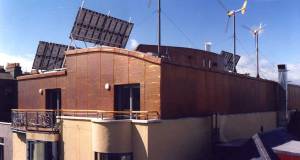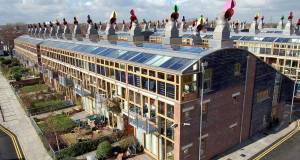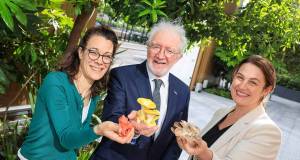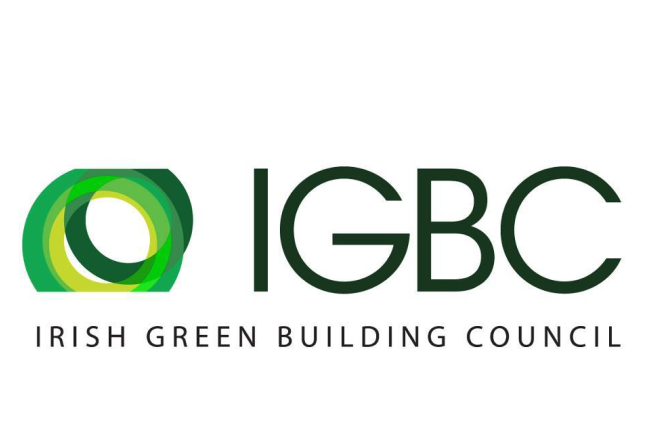 Stephen Barrett
Stephen Barrett
- Blogs
- Posted
Whole life carbon of buildings: a pathway emerges
While significant progress continues to be made on reducing the carbon emissions associated with heating and powering buildings, the other part of whole life carbon calculation, embodied carbon, has proved more elusive. But that may be about to change, and quickly, as Stephen Barrett of the Irish Green Building Council (IGBC) explains.
This article was originally published in issue 43 of Passive House Plus magazine. Want immediate access to all back issues and exclusive extra content? Click here to subscribe for as little as €15, or click here to receive the next issue free of charge
In October, the IGBC launched the “Building a Zero Carbon Ireland” roadmap, which sets out recommendations for how we can halve emissions in the construction and built environment sector by 2030. Projections to 2030 show the switch to cleaner energy and a national retrofit programme will lead to a significant decrease in emissions from operating buildings, but new construction as outlined in the National Development Plan and the Housing for All policy will likely negate these savings unless embodied emissions are also reduced.
The built environment accounts for 37 per cent of Ireland’s emissions, the same as agriculture. Of this 37 per cent, 23 per cent is from operations and a further 14 per cent is embodied in the materials we use to build. As we build more and better, and as the power supply decarbonises, these embodied emissions will grow, yet we do not currently measure or regulate.
The Level(s) European framework for sustainable buildings is now in place, providing guidance for measuring the whole life carbon (WLC) of buildings consistently. If we were to implement it on every project, we could build up a truer picture of the emissions of our sector over the long term and generate data comparable with the rest of Europe – useful for understanding what works and for influencing change in supply chains.
Because WLC assessment is a projection into the future, there is the need for assumptions and estimates, and these need to be realistic, transparent, and consistent. Assumptions have to be made on energy demand and its carbon intensity, on the impactful technical systems that go into buildings that need maintenance and replacements, on occupation, on renovation and refurbishment, and on likely end-of-life disposal – all of these have a significant influence on the WLC impact of a building.
We need consistent generic data in order to plan ahead, and this needs to be realistic, shared and freely available so plans are comparable from an early stage in the design process.
Last year the International Cost Management Standard (ICMS) Coalition launched ICMS3 to provide “a high-level structure and format for classifying, defining, measuring, recording, analysing and presenting life cycle costs and carbon emissions associated with construction projects and constructed assets.”
The built environment accounts for 37 per cent of Ireland’s emissions
It is well placed to track emissions alongside the lifecycle costs (LCC) of a project. Looking at LCC rather than capital costs can support the case for more environmentally sound design options as the co-benefits of lower energy costs, lower replacement and renovation costs, lower risk, higher rental yield and even economic value of the elements of the building in a circular economy at the end of its life are captured.
This kind of assessment is complex, and small differences in assumptions scaled up to large volumes and long timeframes can have significant effects on results. There is therefore a need for transparency in the calculations, a validation process and an open repository where assessments can be accessed and reviewed.
With the above in place we can begin to understand our current and future carbon footprint, set targets (limits?), either per building, per square metre or per person. This may also highlight the benefit of renovation rather than demolish and build as it is often the structure and substructure that account for the larger share of embodied carbon. The other advantage of WLC assessment is the signal it sends up the supply chain to manufacturers.
If the market is demanding this kind of data on building products it will be supplied and manufacturers will strive to improve it. In a recent report titled “Tomorrow’s Markets Today”, the University of Cambridge Institute for Sustainability Leadership (CISL) and Agora Energiewende summed it up as follows; “…a robust long-term business case for clean production investments depends on market-based demand for products made from the efficient use of climate neutral materials.
Such demand is crucial to the overall industrial transition strategy of the EU: executed correctly, it can create economic incentives for increased material efficiency in manufacturing, increased use of circular materials, and provide the often-missing business case for large investments in the production of climate neutral materials."
The IGBC is getting to work on this. We launched the Carbon Designer for Ireland tool* this year, a free resource for early-stage estimates of the carbon impact of different material strategies. In conjunction with the University of Galway, we are working on a methodology and dataset to gather detailed information on live projects and understand just where we are now in our building practices and where we need to be going. The aim is to apply the Level(s) guidance consistently across multiple live projects and different building typologies to understand the average impacts today. The project should also reveal how WLC assessment can fit in with the many considerations and requirements design teams already face, or if indeed there is a need for a new role and discipline. Like many certification schemes across the EU, the Home Performance Index is also being updated to fit the framework, meaning we should begin to see results that can be compared across member states and used to set targets, and give the market the confidence it needs to invest in cleaner manufacturing processes.
*CarbonDesigner for Ireland available at www.igbc.ie/carbon-designer-for-ireland/
Related items
-
 An early green building in a changing Ireland
An early green building in a changing Ireland -
 Bedding sustainability into British buildings: Bioregional’s BedZed
Bedding sustainability into British buildings: Bioregional’s BedZed -
Is shared equity a bridge too far?
-
 Enniskillen passive house camp attracts international audience
Enniskillen passive house camp attracts international audience -
Awaab Ishak’s death shows that building physics are a life and death matter
-
 IGBC launches biodiversity building professionals network
IGBC launches biodiversity building professionals network





